Abstract
1 The relationship between plasma concentration and effect on heart rate and blood pressure at rest and at three levels of exercise were examined for four β-adrenoceptor blocking drugs having differing pharmacological properties.
2 Four doses of each drug were administered, the highest doses producing maximum effects of the work-heart rate and work-blood pressure relationships.
3 Pindolol and oxprenolol, which have intrinsic sympathomimetic activity (ISA) differed from timolol and metoprolol (which do not) in having a smaller effect on resting heart rate at each dose.
4 During exercise the four drugs had similar maximum effects on slope of the work-heart rate relationship suggesting similar suppression of reflex enhancement of sympathetic activity during exercise by each drug. The higher heart rate after drugs with ISA at rest was therefore still present at each level of exercise, e.g. maximum reduction of heart rate at 0.5 maximum work capacity was 20.5, 20.8. 24 and 28% for pindolol, oxprenolol, metoprolol and timolol respectively (P < 0.01 for difference between drugs with and without ISA).
5 The relationship between plasma concentration and reduction of heart rate at 0.5 maximum work capacity was qualitatively similar for each drug and was adequately described by a sigmoidal relationship wtih half-maximal effects at 4.4, 22, 35 and 5 ng/ml for pindolol, oxprenolol, metoprolol and timolol respectively whilst maximal effects occurred at approximately 30, 150, 100 and 30 ng/ml.
6 The results suggest that differences with exercise heart rate due to ISA are mainly due to effects on resting heart rate. The dose-response relationship of β-adrenoceptor blockers reaches a plateau at higher doses, irrespective of whether or not they possess ISA.
Full text
PDF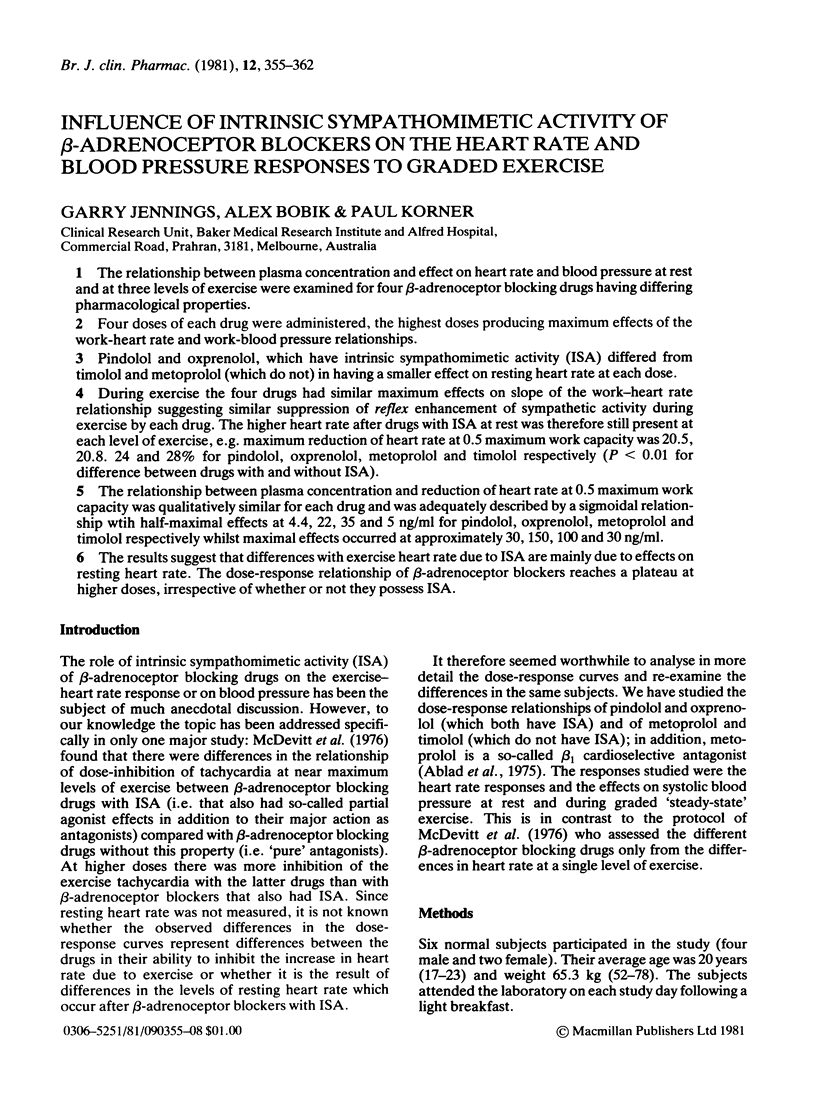
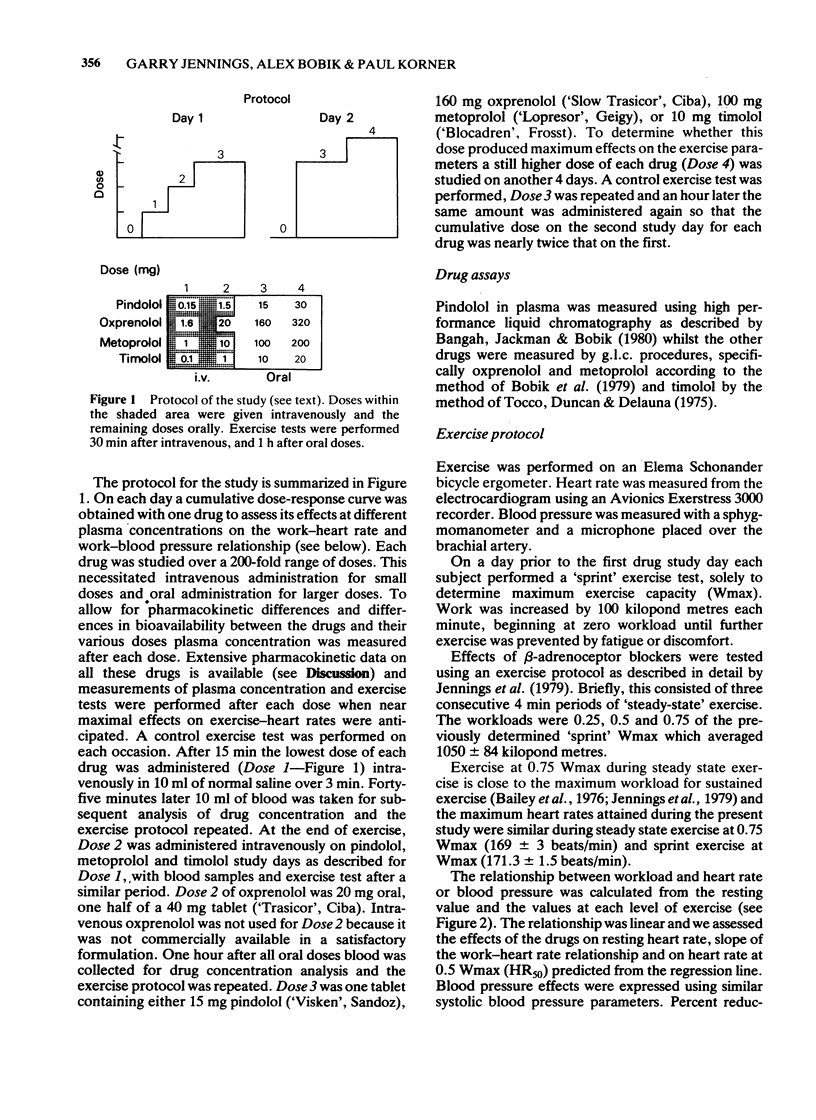
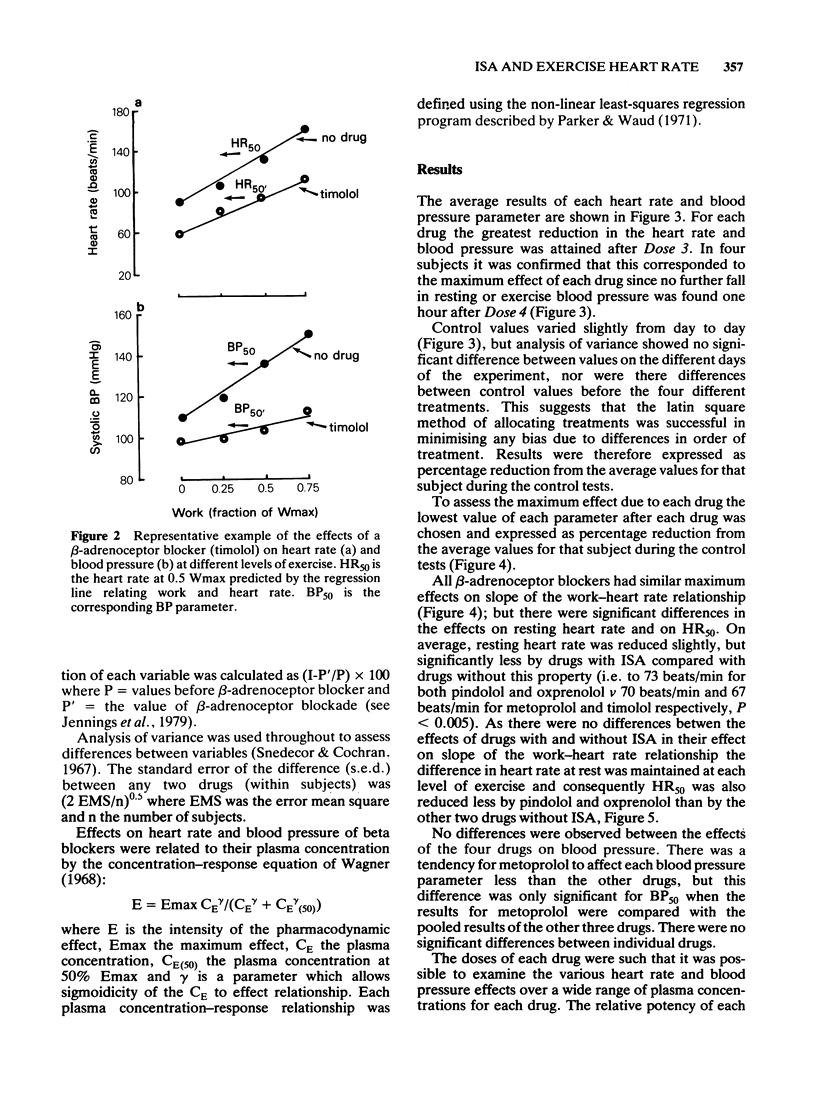
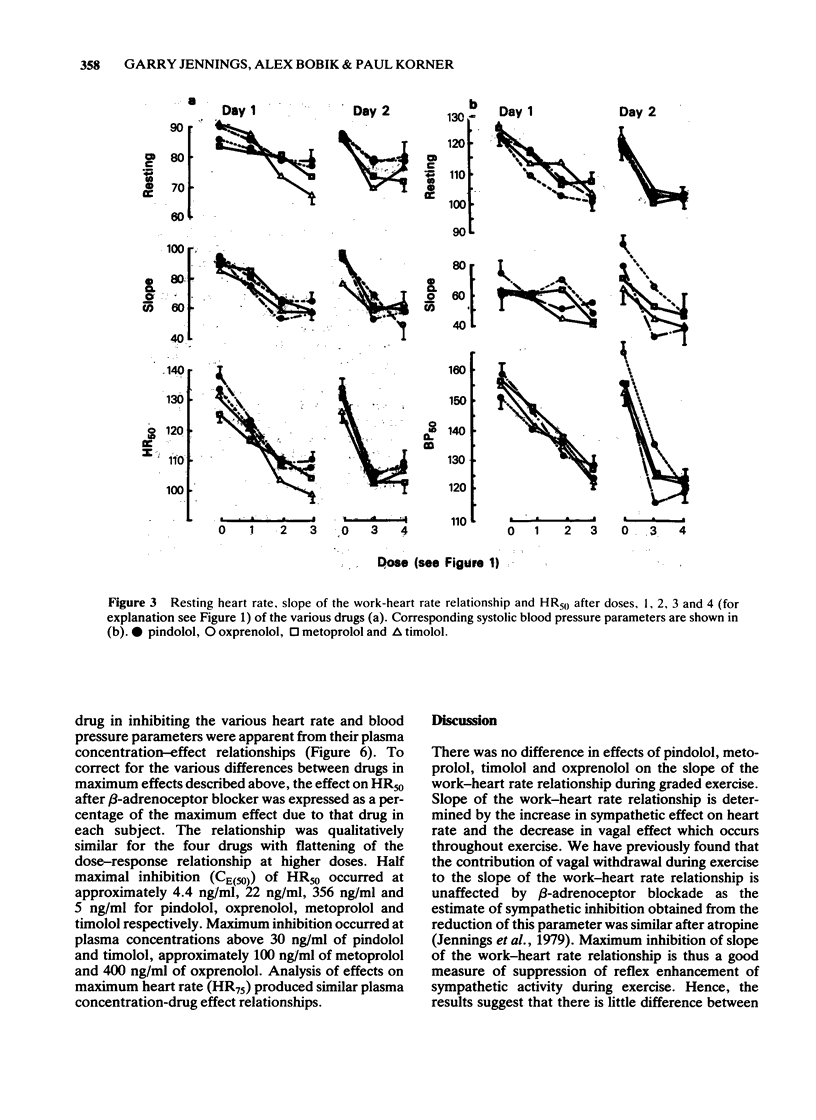
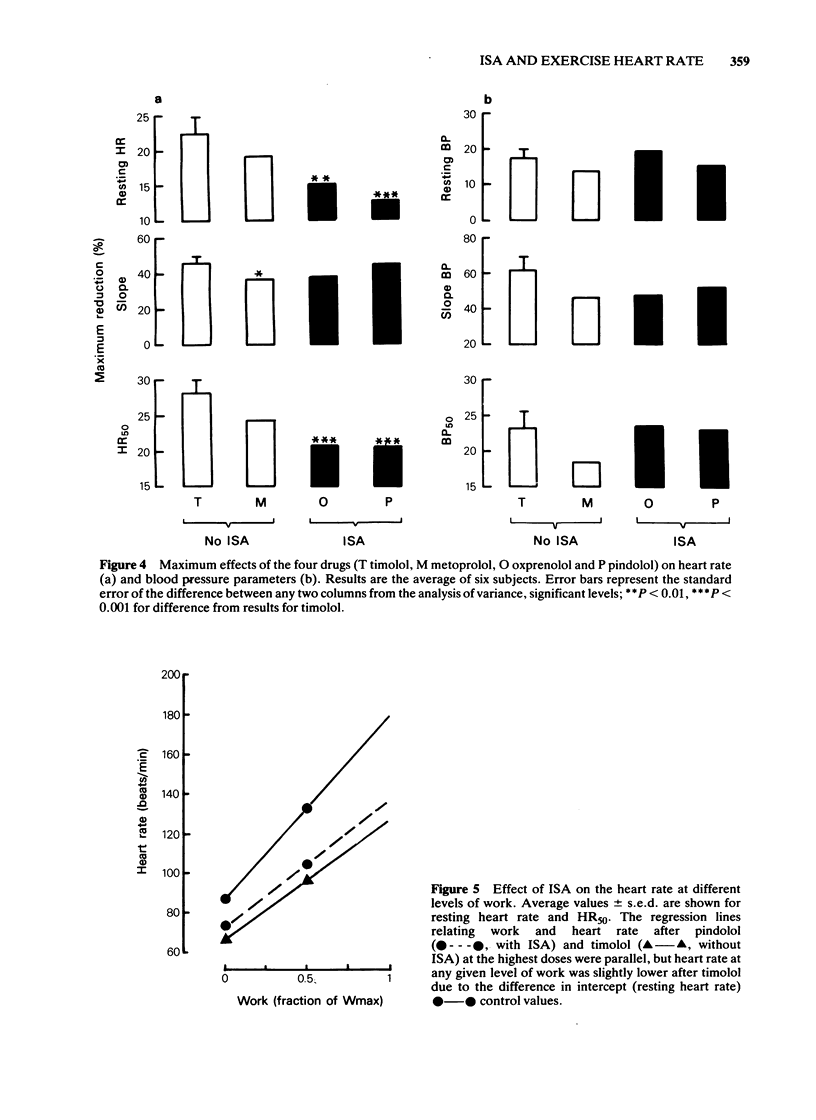
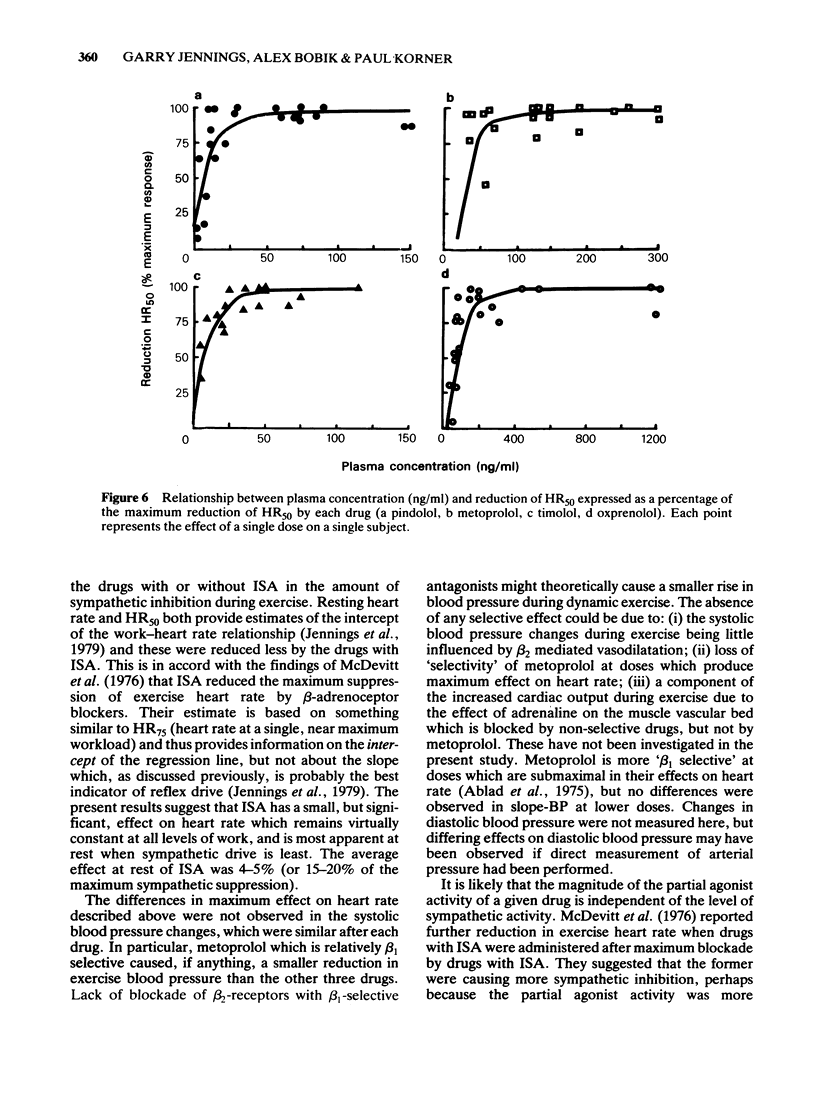

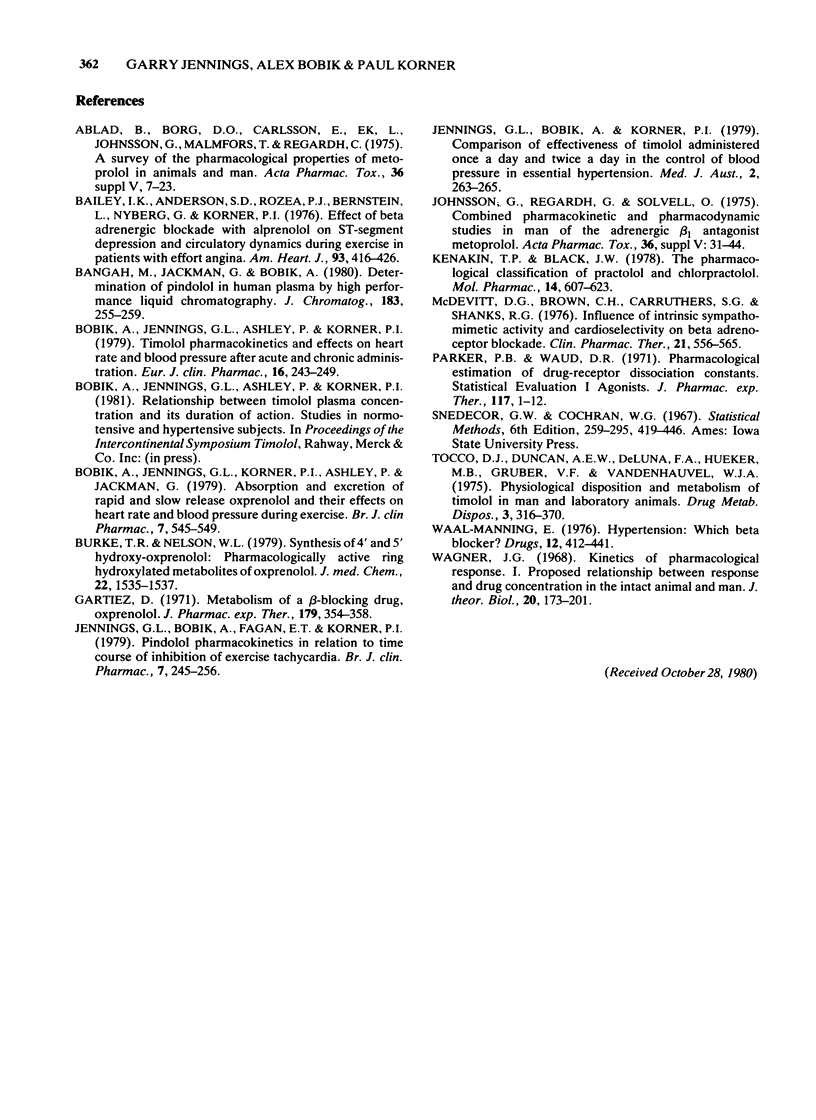
Selected References
These references are in PubMed. This may not be the complete list of references from this article.
- Ablad B., Borg K. O., Carlsson E., EK L., Johnson G., Malmfors T., Regårdh C. G. A survey of the pharmacological properties of metoprolol in animals and man. Acta Pharmacol Toxicol (Copenh) 1975;36(Suppl 5):7–23. doi: 10.1111/j.1600-0773.1975.tb03318.x. [DOI] [PubMed] [Google Scholar]
- Bailey I. K., Anderson S. D., Rozea P. J., Bernstein L., Nyberg G., Korner P. I. Effect of beta-adrenergic blockade with alprenolol on ST-segment depression and circulatory dynamics during exercise in patients with effort angina. Am Heart J. 1976 Oct;92(4):416–426. doi: 10.1016/s0002-8703(76)80040-3. [DOI] [PubMed] [Google Scholar]
- Bangah M., Jackman G., Bobik A. Determination of pindolol in human plasma by high-performance liquid chromatography. J Chromatogr. 1980 Aug 8;183(2):255–259. doi: 10.1016/s0378-4347(00)81703-x. [DOI] [PubMed] [Google Scholar]
- Bobik A., Jennings G. L., Korner P. I., Ashley P., Jackman G. Absorption and excretion of rapid and slow release oxprenolol and their effects on heart rate and blood pressure during exercise. Br J Clin Pharmacol. 1979 Jun;7(6):545–549. doi: 10.1111/j.1365-2125.1979.tb04640.x. [DOI] [PMC free article] [PubMed] [Google Scholar]
- Burke T. R., Jr, Nelson W. L., Buckner C. K. Synthesis of 4'- and 5'-hydroxyoxprenolol:pharmacologically active ring-hydroxylated metabolites of oxprenolol. J Med Chem. 1979 Dec;22(12):1535–1537. doi: 10.1021/jm00198a020. [DOI] [PubMed] [Google Scholar]
- Garteiz D. A. Metabolism of a beta blocking drug, oxprenolol. J Pharmacol Exp Ther. 1971 Nov;179(2):354–358. [PubMed] [Google Scholar]
- Jennings G. L., Bobik A., Fagan E. T., Korner P. I. Pindolol pharmacokinetics in relation to time course of inhibition of exercise tachycardia. Br J Clin Pharmacol. 1979 Mar;7(3):245–256. doi: 10.1111/j.1365-2125.1979.tb00929.x. [DOI] [PMC free article] [PubMed] [Google Scholar]
- Jennings G., Bobik A., Korner P. Comparison of effectiveness of timolol administered once a day and twice a day in the control of blood pressure in essential hypertension. Med J Aust. 1979 Sep 8;2(5):263–265. doi: 10.5694/j.1326-5377.1979.tb127133.x. [DOI] [PubMed] [Google Scholar]
- Johnsson G., Regårdh C. G., Sölvell L. Combined pharmacokinetic and pharmacodynammc studies in man of the adrenergic beta1-receptor antagonist metoprolol. Acta Pharmacol Toxicol (Copenh) 1975;36(Suppl 5):31–44. doi: 10.1111/j.1600-0773.1975.tb03320.x. [DOI] [PubMed] [Google Scholar]
- Kenakin T. P., Black J. W. The pharmacological classification of practolol and chloropractolol. Mol Pharmacol. 1978 Jul;14(4):607–623. [PubMed] [Google Scholar]
- McDevitt D. G., Brown H. C., Carruthers S. G., Shanks R. G. Influence of intrinsic sympathomimetic activity and cardioselectivity on beta adrenoceptor blockade. Clin Pharmacol Ther. 1977 May;21(5):556–566. doi: 10.1002/cpt1977215556. [DOI] [PubMed] [Google Scholar]
- Parker R. B., Waud D. R. Pharmacological estimation of drug-receptor dissociation constants. Statistical evaluation. I. Agonists. J Pharmacol Exp Ther. 1971 Apr;177(1):1–12. [PubMed] [Google Scholar]
- Tocco D. J., Duncan A. E., Delauna F. A., Hucker H. B., Gruber V. F., Vandenheuvel W. J. Physiological disposition and metabolism of timolol in man and laboratory animals. Drug Metab Dispos. 1975 Sep-Oct;3(5):361–370. [PubMed] [Google Scholar]
- Waal-Manning H. J. Hypertension: which beta-blocker? Drugs. 1976 Dec;12(6):412–414. doi: 10.2165/00003495-197612060-00002. [DOI] [PubMed] [Google Scholar]
- Wagner J. G. Kinetics of pharmacologic response. I. Proposed relationships between response and drug concentration in the intact animal and man. J Theor Biol. 1968 Aug;20(2):173–201. doi: 10.1016/0022-5193(68)90188-4. [DOI] [PubMed] [Google Scholar]


